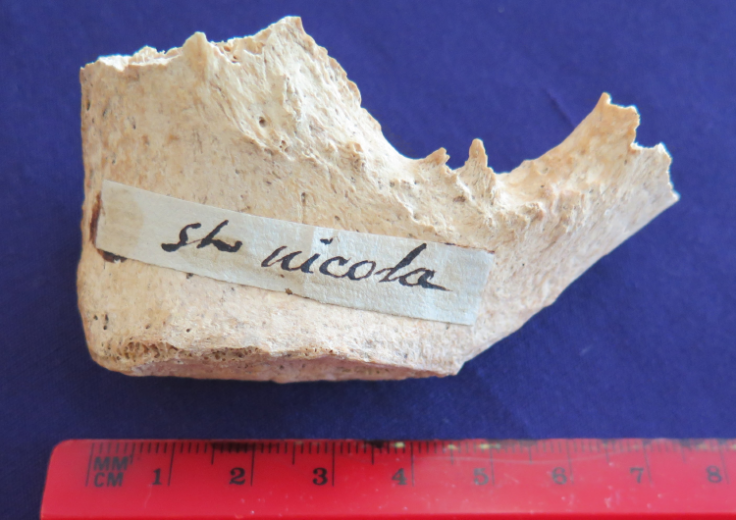The bones of Father Christmas: Scientists believe they've found Santa Claus's pelvis

KEY POINTS
- Fragment of bone claimed to be from Saint Nicholas confirmed as dating back to time of death.
- Tales of Saint Nicholas's generosity inspired Father Christmas legend.
Scientists have suggested that a fragment of bone dating back to the 4th century could belong to Father Christmas himself – Saint Nicholas.
The team from the University of Oxford established the age of the relic, taken from a human pelvis, dates back to the fourth century AD. Historians say St Nicholas died around 343 AD.
Prof Tom Higham and Dr Georges Kazan, directors of the Oxford Relics Cluster at Keble College's Advanced Studies Centre, said the results of the radiocarbon testing on a micro-fragment of the bone suggests "in principle" that the remains are authentic and belong to the saint who inspired Santa Claus.
Higham said: "Many relics that we study turn out to date to a period somewhat later than the historic attestation would suggest. This bone fragment, in contrast, suggests that we could possibly be looking at remains from St Nicholas himself."
St Nicholas is believed to have lived as a bishop in Myra, Asia Minor, in what is now modern-day Turkey. Tales of his generosity inspired the legend of Father Christmas across Europe in the 6th century.
It is believed the name Santa Claus came from the Dutch version of his name, 'Sinterklaas'.
The historic saint died in Myra around 343 AD, before his relics were carried away by a group of sailors to Bari in modern-day Italy. Most of the relics are held in the Basilica di San Nicola, Bari, in a crypt beneath a marble altar. Others are preserved in the Chiesa di San Nicolo al Lido in Venice.
Kazan said: "These results encourage us to now turn to the Bari and Venice relics to attempt to show that the bone remains are from the same individual.
"We can do this using ancient palaeogenomics, or DNA testing. It is exciting to think that these relics, which date from such an ancient time, could be genuine."
The bone analysed by the team came from a church in Lyon and is now owned by Father Dennis O'Neill, a priest in Illinois.
The team said that the bone has been venerated for almost 1,700 years, making it one of the oldest relics they have ever analysed.
When asked about its authenticity, Higham said: "Science is not able to definitely prove that it is. It can only prove that it is not."






















